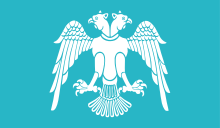
Back Seldschuken ALS السلالة السلجوقية Arabic Dinastía selyúcida AST Səlcuqilər Azerbaijani سلجوق خاندانی AZB Сәлжүкиҙәр Bashkir Сельджукіды Byelorussian Сэльджукі BE-X-OLD Селджукиди Bulgarian সেলজুক রাজবংশ Bengali/Bangla

Die Seldschuken, auch seldschukische Türken,[1] Seldschuk-Türken oder Seldschuqen (türkisch Selçuklular, persisch سلجوقيان Saldschughiyan, DMG Salǧūqiyān, arabisch سلجوق Saldschuq, DMG Salǧūq, pl. السلاجقة as-Saladschiqa, DMG as-Salāǧiqa) waren eine von 1040 bis 1194 herrschende Fürstendynastie oghusischen Ursprungs[2][3], die das turko-persische[4][5][6][7][8] Reich der Großseldschuken[2] begründete, das sich über Mittelasien, Iran, den Irak, Syrien, Anatolien und Teile der Arabischen Halbinsel erstreckte[9] und seine Blütezeit etwa zwischen 1047 und 1157 hatte.
Einige Seldschuken-Fürsten beherrschten das gesamte Großseldschukenreich, andere Teilgebiete wie Kerman und Syrien (bis zum Anfang des 12. Jahrhunderts) oder Anatolien (Sultanat von Rum bis zum Anfang des 14. Jahrhunderts).[10]

Die Seldschuken waren sunnitische Muslime[2] und leiteten mit ihrem Sieg in der Schlacht von Manzikert im Jahr 1071 die Landnahme Anatoliens durch Turkvölker ein.[11][12]
- ↑ Tamara Talbot Rice: Die Seldschuken. Köln 1963, S. 10
- ↑ a b c Josef Matuz: Das Osmanische Reich. Grundlinien seiner Geschichte. Darmstadt 1985, S. 14
- ↑ Joo-Yup Lee: The Turkic Peoples in World History. Taylor & Francis, 2023, ISBN 978-1-00-090421-5 (google.com [abgerufen am 16. April 2024]).
- ↑ M.A. al-Bakhit, L. Bazin, S.M. Cissoko ; co-edited by M.S. Asimov: History of Humanity: From the Seventh to the Sixteenth Century. Band 4, 1994, ISBN 978-92-3102813-7, S. 734–735.
- ↑ Michael Mandelbaum: Central Asia and the World: Kazakhstan, Uzbekistan, Tajikistan, Kyrgyzstan, and Turkmenistan. Council on Foreign Relations, 1994, ISBN 978-0-87609-167-8 (google.fr [abgerufen am 16. April 2024]).
- ↑ Mohammad Ali Amir-Moezzi: ŠAHRBĀNU. In: Encyclopædia Iranica. 20. Juli 2005, abgerufen am 16. April 2024 (englisch): „(..) non-Persian dynasties such as the Ghaznavids, Saljuqs and Ilkhanids were rapidly to adopt the Persian language and have their origins traced back to the ancient kings of Persia rather than to Turkish heroes or Muslim saints (Levy, pp. 66 ff.; Spuler, pp. 176-77).“
- ↑ Encyclopaedia Iranica Foundation: Welcome to Encyclopaedia Iranica. Abgerufen am 16. April 2024 (amerikanisches Englisch): „The Persian language also began to take root as a vehicle for literature.“
- ↑ Encyclopaedia Iranica Foundation: Welcome to Encyclopaedia Iranica. Abgerufen am 16. April 2024 (amerikanisches Englisch): „The Saljuqs (...) adopted Persian as the official language of the administration and of much of the court correspondence. The most important and immediate effect of these decisions was the very widespread diffusion of Persian as a literary language alongside Arabic. The Saljuqs, who had nocomparable cultural and literary heritage of their own in Turkish to counter Persian,accepted and cultivated the prestigious literary tradition provided by Persian language and culture. By so doing, they played a significant role in the diffusion of the Persian literary language (...)“
- ↑ Tamara Talbot Rice: Die Seldschuken. Köln 1963, S. 22
- ↑ Encyclopaedia of Islam, digitale Edition, Artikel Saldjukids – Einleitung
- ↑ Steinbach (1996), S. 22
- ↑ Matuz (1985), S. 16
© MMXXIII Rich X Search. We shall prevail. All rights reserved. Rich X Search